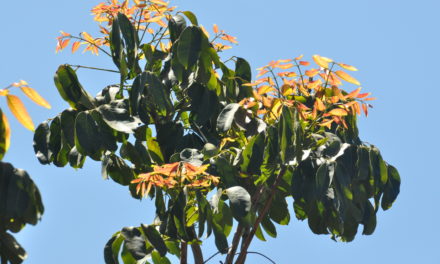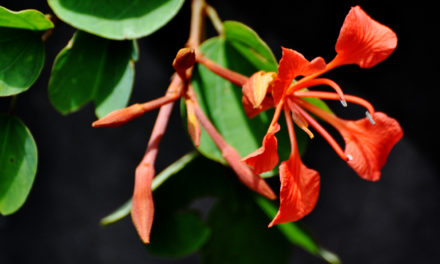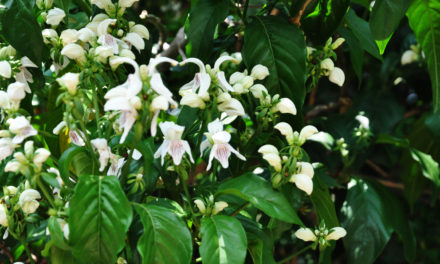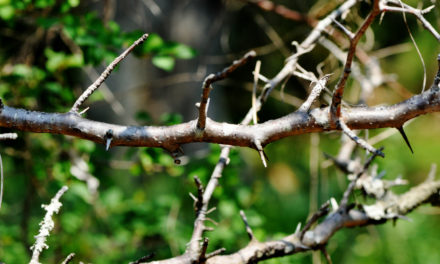General Info
This scandent Shrub has a well-branched stem. Almost opposite Leaves are simple with entire margins. Petiole is eared at the base. Blue Flowers are bisexual actinomorphic and 5-merous. Fruit is a membranous capsule.
Description
Plumbago auriculata
Previous Names: Plumbago capensis, Plumbagidium auriculatum
RSA Tree No. n/a. NOT Loaded YET
Common names: Cape leadwort, Leadwort, Plumbago, Cape Plumbago.
Family: Plumbaginaceae. (Leadwort / Plumbago family). Most members are perennial herbaceous plants but a few are shrubs or lianas. There are about 26 genera in this family. All members have Actinomorphic, 5-merous Flowers, a 5 styled pistil and a unilocular ovary.
Name derivation: Plumbago: plumbum Latin for lead. It used to be thought of as a cure for lead poisoning. It may also refer to the ability of the ability of the sap to create lead-coloured stains on the skin. auriculata ear- shaped – referring to the shape of the base of the leaves.
Conservation Status: L C. Least Concern. Assessed: 2005 (W. Foden and L. Potter).
Stem
The well-branched Stems are scandent (climbing without the aid of tendrils) long and thin and in cultivated plants the usually a scrambling shrub may reach 2m high. As a climbing stem, it may reach 5m high and 3m wide. It is multi-stemmed and generates suckers.
Leaves
Minute gland dots are present on the thin, almost opposite Leaves, which are occasionally alternate. They are oblong to ovate to wedge shaped, and may reach 5 x 2cm. The Margin is entire. The upper surface changes from light to a darker green as the leaf matures. The lower surface is a grey-green and may have light-reflecting scales present. An exudate from chalk glands can leave a white visible residue that only resembles powdery mildew. The winged Petiole (leaf stalk) is decurrent (with leaf blades that partly wrap or have wings around the petiole). It is eared at the base. The wings extend down and clasp the stem. The leaf is estipulate – without Stipules (basal appendages of the petiole).
Flowers
The bisexual and actinomorphic (regular, symmetrical. Perianth, the calyx and corolla, is divisible into more than 2 identical sectors) Flowers are bracteate (modified specialised leaf usually found with inflorescences and flowers). The flowers are in Cymes (a broad, more or less flat-topped, determinate flower cluster, with central flowers opening first), but here, each is reduced to a single 5-merous flower. The Calyx is 5-lobed with sticky gland tipped hairs (photo 683) that make a good self-adhesive corsage. These gland-tipped hairs can trap insects. The Corolla is gamopetalous (united/joined petals – at least at the base). The 5 Petal lobes and are light blue (or white: variety alba and even dark blue: variety auriculata). They move out almost horizontally. When blue they may have a visible, darker blue central vein (photo 681). The 5 free Stamens are broadened at the base. The Filaments are threadlike with a base that rests against the Ovary. Stamens arise from the Receptacle (is that expanded tip of the flower stalk from which the floral parts develop. It is greatly expanded in the Compositae / Asteraceae and Ficus and is situated under the ovary). (Nov-Jan). There is a single Pistil (a unit of the Gynoecium, the female element of the flower, composed of the Ovary, Style and Stigma). The Ovary is superior and unilocular (containing a single chamber) and there are 5 filiform (thread or filament like) and hairy styles of different lengths each ending in a stigma. (Sep-Oct++).
Fruit
Sticky hairs are present on the Fruit. These may aid seed dispersal. The fruit is a membranous Capsule (a dry fruit resulting from the maturing of a compound ovary with more than 1 carpel) with 5 grooves which open to allow the Seeds to be dispersed.
Distribution & Ecology
This resilient plant is also common in saline habitats. It grows in a variety of soil types. It is naturally located in the Western Cape, Eastern Cape, KwaZulu-Natal, Free State, Gauteng, Northern Province and in Mpumalanga. It is the food-plant for the larvae of the butterflies: “Short-toothed Blue” or “Tite’s Zebra Blue” (Leptotes brevidentatus) and the “Common-Blue” (Cyclyrius pirithous). The flowers also attract robins. The plant is often found growing with the Cape Honeysuckle (Tecomaria capensis).
Ethnobotany
This is an attractive garden plant may become slightly invasive. It is fast growing drought resistant and has the ability to recover after a setback. Removing and replanting suckers is the best way of propagation. It is now grown in many parts of the world – including Australia and the USA (South-west and Southeast). Although it is drought resistant, watering does help flower production. The Xhosa use the plant medicinally.
References
Boon, R. 2010. Pooley’s Trees of eastern South Africa. Flora and Fauna Publications Trust, Durban.
Fabian, A & Germishuizen, G. 1982. Transvaal Wild Flowers, Macmillan South Africa, Johannesburg.
http://redlist.sanbi.org/species.php?species=3567-1
https://en.wikipedia.org/wiki/Leptotes_brevidentatus
https://en.wikipedia.org/wiki/Plumbago_auriculata
http://www.plantzafrica.com/plantnop/plumbago.htm
http://www.plantbook.co.za/plumbago-auriculata/
http://posa.sanbi.org/flora/browse.php?src=SP
https://en.wikipedia.org/wiki/Plumbaginaceae





